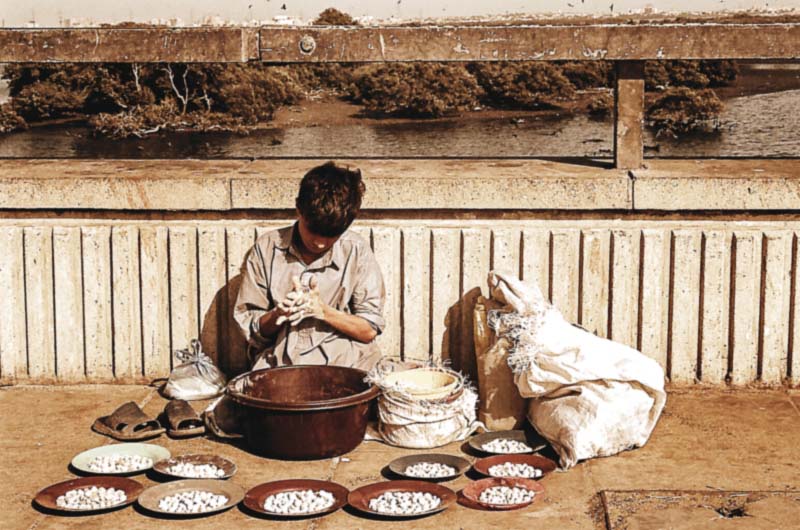
A child’s hands are meant to hold books and pencils. But throughout history we have witnessed how some children have been forced to pick up tools and brooms and shoulder some of the burden to turn the wheels of the economy. During the 1700s and 1800s children formed an active portion of Britain’s labour force. Most were employed as domestic servants, in textile mills or at railway stations, ship yards or coal mines.
Worst of all, children below the age of nine or 10, mostly orphaned, were bought by Master Sweeps to climb up chimneys and sweep them. This cruel act resulted either in death, irreversible lung damage due to soot or the formation of calluses on hands, elbows and feet. It wasn’t until Joseph Glass, an engineer from Bristol, England, invented a chimney-sweeping machine that children were spared from performing this life-threatening task. While the West has made considerable efforts to eliminate child labour — defined by the International Labour Organisation (ILO) as work that deprives children of their childhood, their potential and their dignity, and that is harmful to physical and mental development — from its shores, this hasn’t stopped companies from outsourcing manufacturing to lesser developed nations, such as Pakistan, where child labour is still endemic.
Pakistan’s underage workforce
The last nationwide survey on child labour conducted in 1996 by the Federal Bureau of Statistics, with technical support from the ILO, found that 3.3 million children out of 40 million children, between the ages five and 14, are economically active in Pakistan. The figure is composed of approximately 73% boys and 27% girls. According to the survey, the most cogent reasons parents or guardians give for allowing their child to work included assisting in household enterprises, supplementing the household income and because no one else was available to do household chores.

A child fixing a motorcycle headlight on the footpath. PHOTO: ARIF SOOMRO
For many belonging to Pakistan’s next generation, opting for labour at an early age is the only way to survive. After his father passed away, 12-year-old Aziz’s family was left struggling to pay off loans so he took up work at a brick kiln near Jhallo Park in Lahore. “Sometimes more than food and water, I dream of getting my childhood back,” says Aziz. “I look at other boys playing with cricket bats on the streets and I wish I could join them, even if it is just for one day.”
According to Aziz, who works from the first light of day to midnight, his employer beats him with a cane every week. “I take home $3 (approximately Rs300) a day on average, but the smile on my mother’s face when I see her at night makes up for what I have endured throughout the day,” he says.

Lahore, Karachi, Sialkot, Multan, Peshawar and Loralai, amongst others, are key cities in the country where child labour is rampant. An ILO survey showed that in the absence of any effective legislation against child labour in Balochistan there are approximately 500 child mine workers in Loralai, some below the age of eight. In Khyber-Pakhtunkhwa (K-P), there are approximately 1.5 million children currently employed, reports the Society for the Protection of the Rights of the Child, an Islamabad-based child rights organisation.
Fareeha, who lives in Orangi Town, Karachi, has a similar story to share. After her 31-year-old brother, employed as a goldsmith, passed away due to jaundice, she took up work as a domestic helper alongside her mother. “My father is unemployed and sleeps most of the time. When he is awake, he just roams the streets all day,” she says. But unlike Aziz and many others who suffer physical and sexual abuse at the hands of their employer, Fareeha says her employers have been kind to her. “She (her employer) treats us like her own family, gives us clothes and offers us the same food they eat, so I don’t miss going to school,” she adds. “We cannot afford to educate her with just a single source of income in any case,” reasons Fareeha’s mother, Mona. “So it is better that she comes to work with me and does something useful rather than getting involved in other harmful activities behind my back,” she adds.
A lucrative option
Despite a number of laws prohibiting child labour or regulating the working conditions of child and adolescent workers, including The Factories Act 1934, The West Pakistan Shops and Establishments Ordinance 1969, The Employment of Children Act 1991, The Bonded Labour System Abolition Act 1992 and The Punjab Compulsory Education Act 1994, little progress has been made in the way of holding individuals accountable. Employers, therefore, especially companies, continue to circumvent the law and hire cheap labour for greater profit margins in local and international markets.

Multinationals are notorious for hiring cheap labour in developing nations. The multibillion dollar sportswear company Nike, for instance, came under heavy criticism for being associated with child labour. In 2006, when the company was accused of supplying footballs stitched by children in Pakistan, it sacked its supplier and defended its position by claiming that verification of age in countries such as Pakistan is exceedingly challenging.
The sporting goods industry in Sialkot has been in the line of fire for decades for employing child labour to make goods that are sold in the international market for a fortune. The Adidas Brazuca used during the 2014 FIFA World Cup in Brazil was stitched in a factory in Sialkot, but it is still unclear whether children were part of its manufacturing process. “When I used to make the footballs, I would wish I could play with them one day as well,” says nine-year-old Kabir, who along with his father was involved in the manufacture of footballs in Sialkot until the factory they worked in was raided.
That hasn’t stopped Kabir from pursuing work elsewhere. He joined a carpet factory with his father to support his seven siblings. “The hours are still very long and my fingers really hurt with carpet weaving,” he shares. “When I hear that my carpets are being sold for thousands of rupees in malls, I dream that someday we will also be able to afford a carpet to decorate our home.”
Battling child labour
With growing global awareness — the ILO launched the World Day Against Child Labour in 2002 to focus attention on the global extent of child labour — and media scrutiny, it is becoming increasingly difficult for countries and multinationals to blanket child labour. Many have faced severe consequences as a result. “The economic repercussions cannot be overlooked by Pakistan,” says Dr Ali Khan, chairperson of the Social Sciences and Humanities Department at the Lahore University of Management Sciences. “A recent example includes Walt Disney, a leading US entertainment company, which stopped placing orders with Pakistani textile houses due to labour issues in the country. The annual loss [suffered by Pakistan] as a result of this decision is estimated to be between $150 million and $200 million,” he says.

In Pakistan, 3.3 million children out of 40 million children, between the ages five and 14, are economically active. PHOTO: ARIF SOOMRO
As a result, the government of Punjab partnered with the ILO to implement a seven-year project to eliminate child labour, particularly from brick kilns, worth approximately Rs5,159 million. This project involves “integration, networking and coordination among various provincial departments and district offices, strengthening legislation, capacity building of project/government staff to ensure effective service delivery through monitoring and knowledge sharing and promotion of good practices with other provinces,” states the ILO. The project takes into account the results and lessons learnt during ILO’s 20-year collaboration with the government on various child labour and bonded labour interventions in Pakistan, reports the ILO. Unlike many initiatives that aim to simply free children from bonded labour, this project aims to rehabilitate freed bonded labour and empower affected families economically. According to the government of Pakistan, so far 8,000 child and bonded labourers have been rehabilitated. “The government of Balochistan is also using its resources to address similar issues in the province,” adds the ILO.
Under the 18th amendment, child rights fall under the domain of provinces. Along with Punjab, K-P’s provincial government also presented the K-P Prohibition of Employment of Children Bill 2015 and K-P Bonded Labour System (Abolition) Bill 2015 before the assembly on March 24 and aims to end the employment of children in the province.

Attempts have also been made at an individual level to break free from child labour. Iqbal Masih from Muridke, in Shaikhupura district in Punjab, is a striking example of a child slave who became a child activist fighting bonded labour. At the age of four he was sold into bondage by his family to pay off the Rs600 they had borrowed from the owner of a carpet factory. After Masih miraculously escaped from his slavery twice, he joined the Bonded Labour Liberation Front and helped more than 3,000 children escape a similar plight. At the age of 12, however, he was shot dead but has managed to inspire countless others to carry forward his legacy in the country.
Poverty around the world is known to exacerbate child labour and create inter-generational poverty traps. Children who forgo an education to contribute to the family income give up the dream of a better future. These children are exploited by employers who support and encourage child labour to further their gains. In the long run, however, this will adversely impact the country’s economy with a smaller skilled labour force.

Most child workers are victims of physical and sexual abuse. PHOTO: ARIF SOOMRO
Today, not only Pakistan but many developed nations who outsource manufacturing are guilty of robbing the country’s youngest generation the right to a childhood. While children will have their entire lives to work and earn once they turn 18, they only have a few years to enjoy the innocence of childhood.
Abolishing bonded labour
Pakistan has ratified a number of international covenants and conventions that proscribe slavery, forced labour and debt-bondage. The Bonded Labour system (Abolition) Act of 1992 was introduced with the avowed purpose of abolishing the bonded labour system, with a view of preventing the economic and physical exploitation of the labour class in the country and for matters connected to it.
Saba Karim has studied anthropology at the University of Oxford and currently works in Doha, Qatar.
Published in The Express Tribune, Sunday Magazine, April 5th, 2015.















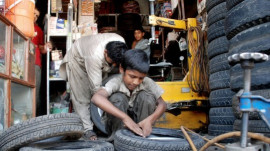
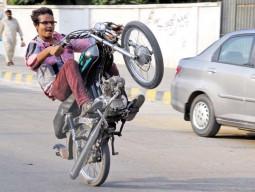

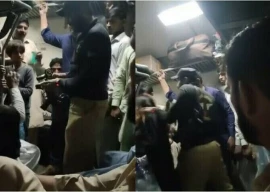
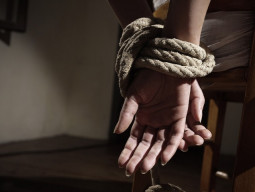
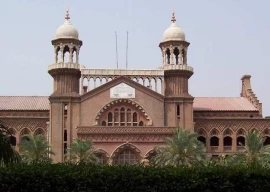






















COMMENTS (4)
Comments are moderated and generally will be posted if they are on-topic and not abusive.
For more information, please see our Comments FAQ